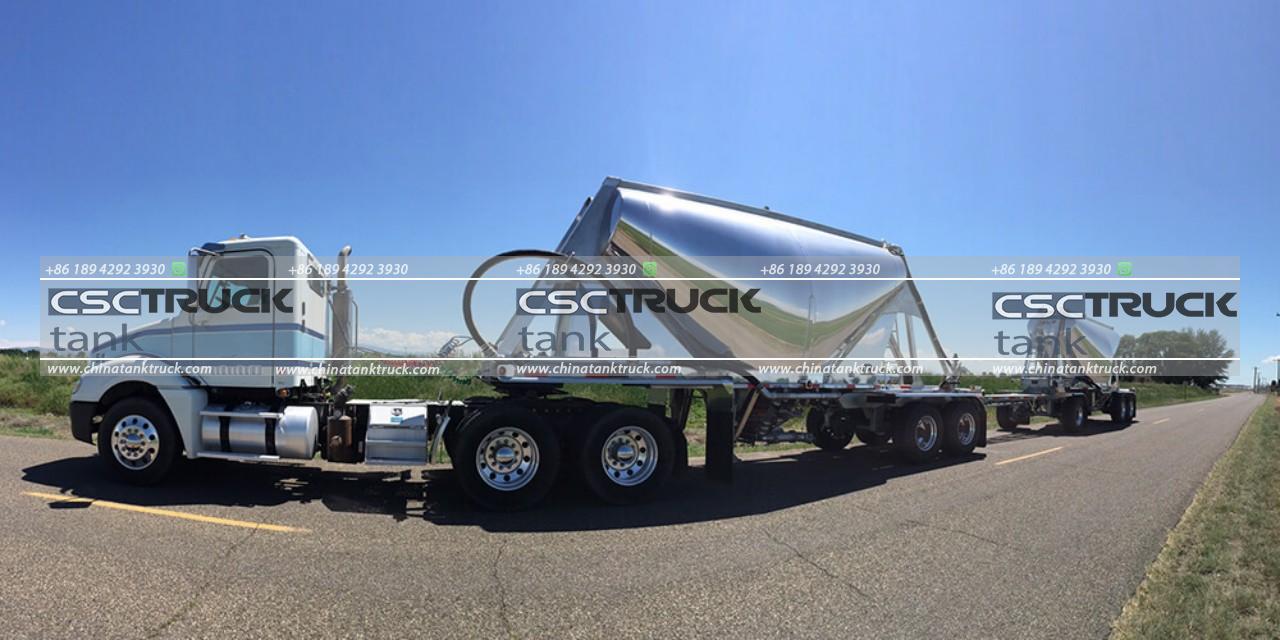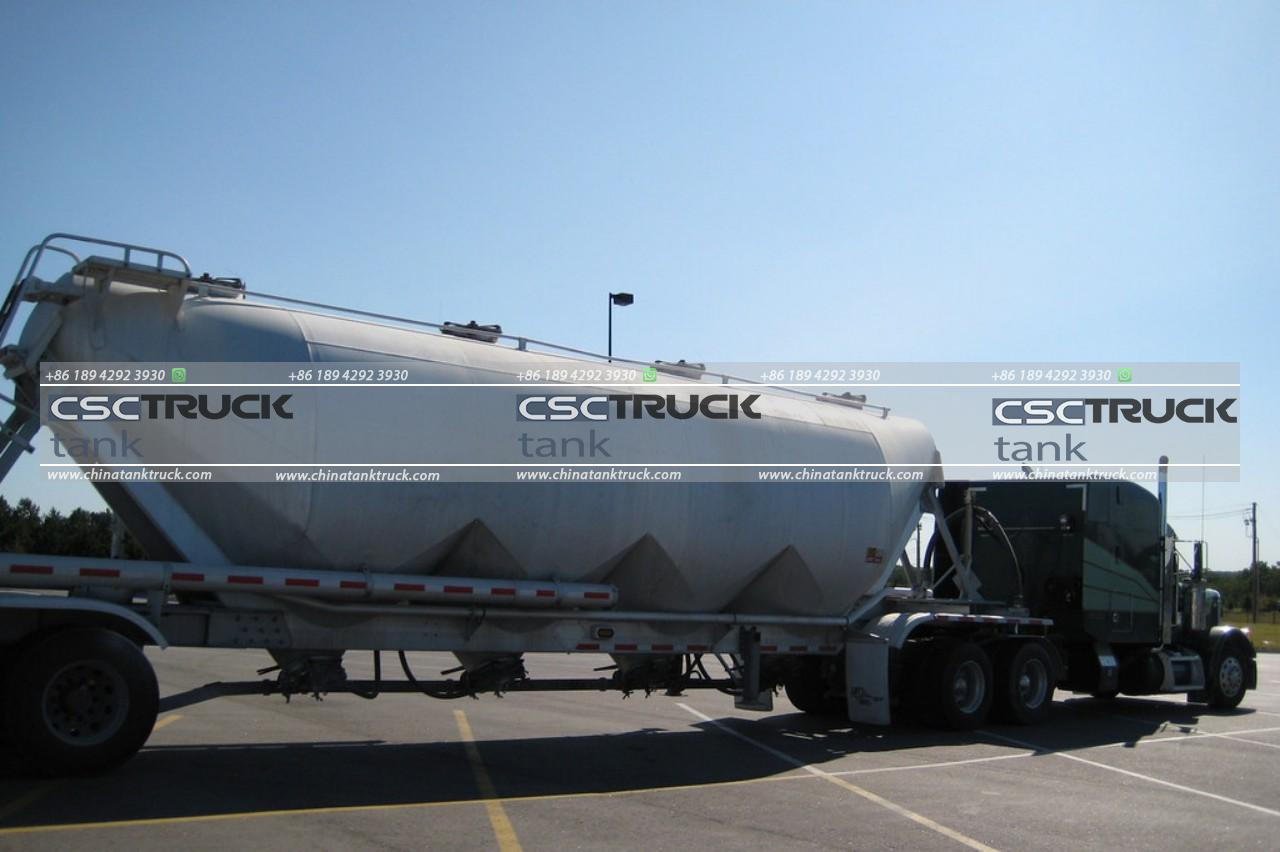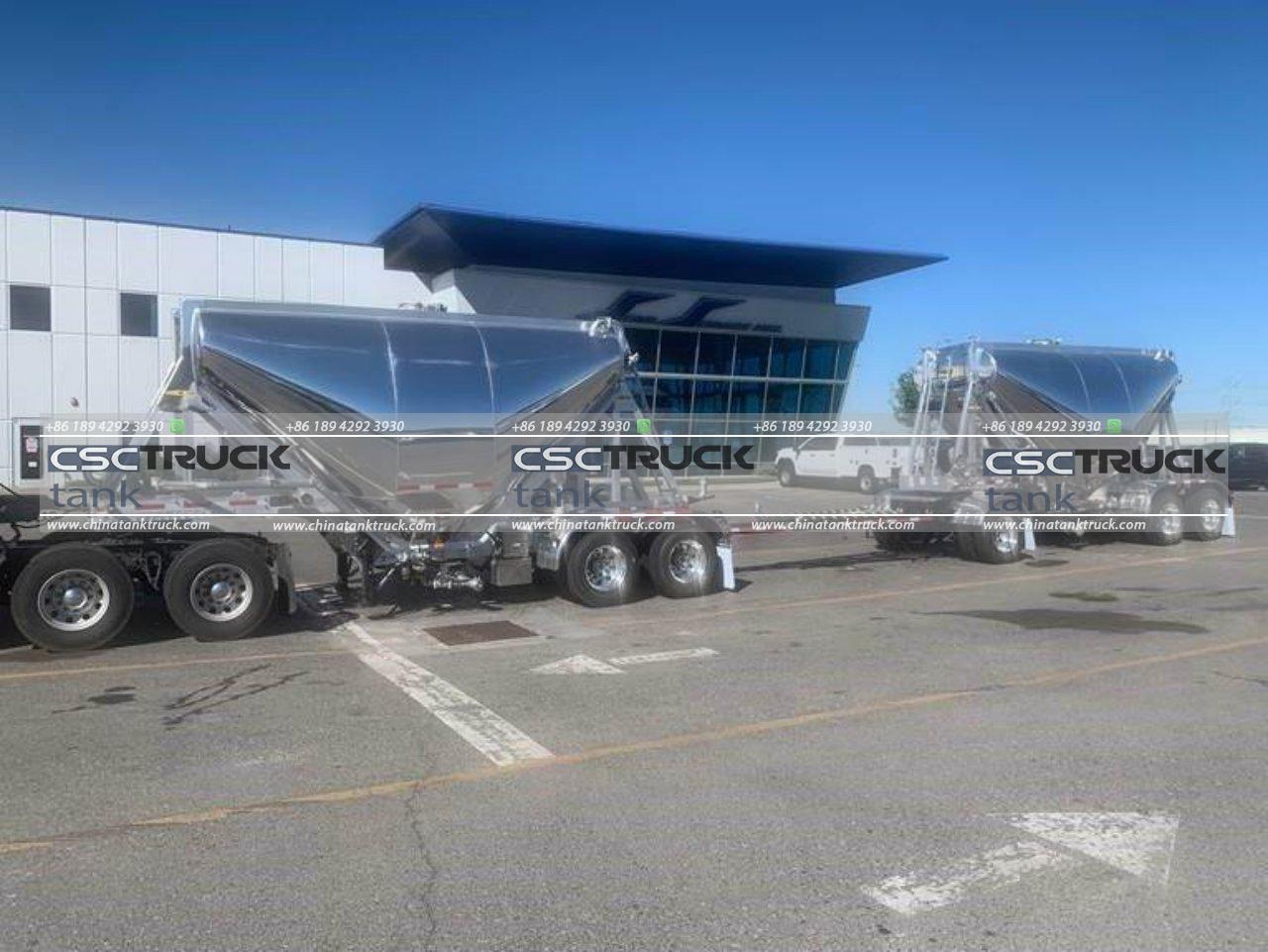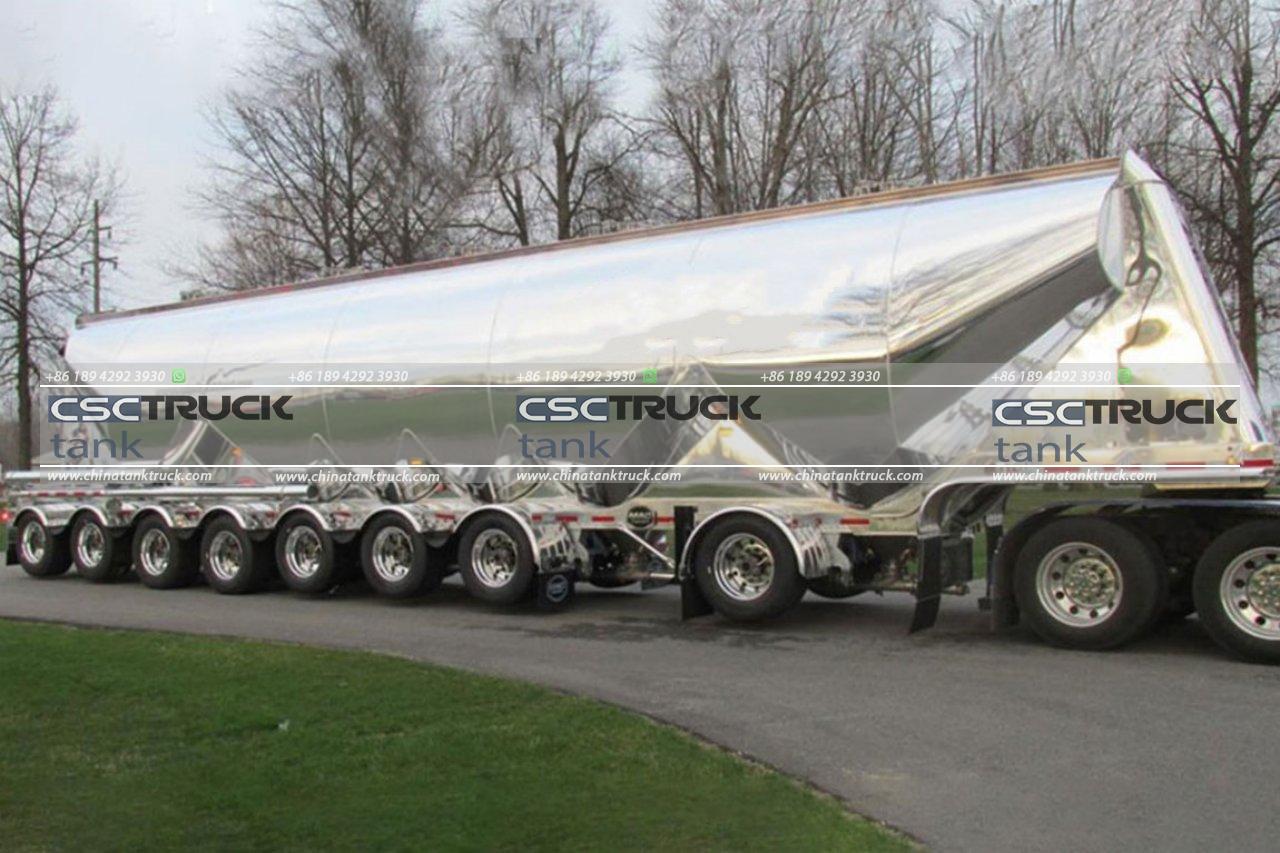Pneumatic tank trucks are specialized vehicles used to transport bulk materials in a dry form. They are equipped with a blower or compressor that uses air to convey the material from the truck to the loading or unloading point. This method of transportation is very efficient and can be used to transport a wide variety of materials, including powders, granules, pellets, and flakes.
How Pneumatic Tank Trucks Work
The basic principle of pneumatic tank truck operation is to use air to create a pressure differential between the inside and outside of the tank. This pressure differential forces the material to flow from the tank through a hose or pipe to the loading or unloading point.
The blower or compressor is used to create the air pressure. The air is then fed into the tank through a series of nozzles. The nozzles are located at the bottom of the tank, so that the air can lift the material up and out of the tank.
The material is then conveyed through a hose or pipe to the loading or unloading point. The hose or pipe is connected to a discharge nozzle, which is used to control the flow of material.
Advantages of Pneumatic Tank Trucks
There are several advantages to using pneumatic tank trucks for bulk material transportation. These advantages include:
- Efficiency: Pneumatic tank trucks are very efficient at transporting bulk materials. They can move large quantities of material quickly and easily.
- Safety: Pneumatic tank trucks are a safe way to transport bulk materials. The air pressure prevents the material from becoming airborne, which reduces the risk of dust explosions.
- Environmentally friendly: Pneumatic tank trucks are an environmentally friendly way to transport bulk materials. They do not produce any emissions, so they do not contribute to air pollution.
- Flexibility: Pneumatic tank trucks can be used to transport a wide variety of bulk materials. They are not limited to transporting powders, granules, pellets, and flakes. They can also be used to transport other materials, such as liquids and slurries.

Disadvantages of Pneumatic Tank Trucks
There are a few disadvantages to using pneumatic tank trucks for bulk material transportation. These disadvantages include:
- Cost: Pneumatic tank trucks are more expensive than traditional tank trucks. The blower or compressor adds to the cost of the vehicle.
- Complexity: Pneumatic tank trucks are more complex than traditional tank trucks. They require more maintenance and regular inspection.
- Hazards: Pneumatic tank trucks can be hazardous if they are not properly operated. The air pressure can create a dangerous situation if the material is not properly contained.
Applications for Pneumatic Tank Trucks
Pneumatic tank trucks are used in a wide variety of industries, including:
- Food and beverage: Pneumatic tank trucks are used to transport a variety of food and beverage products, such as flour, sugar, and coffee beans.
- Chemical: Pneumatic tank trucks are used to transport a variety of chemicals, such as fertilizers, plastics, and paints.
- Mining: Pneumatic tank trucks are used to transport a variety of mining products, such as coal, sand, and gravel.
- Construction: Pneumatic tank trucks are used to transport a variety of construction materials, such as cement, sand, and gravel.
Types of Pneumatic Tank Trucks
There are two main types of pneumatic tank trucks:
- Continuous-flow pneumatic tank trucks: These trucks use a blower or compressor to create a continuous flow of air, which is then used to convey the material from the tank to the loading or unloading point.
- Pulsed-flow pneumatic tank trucks: These trucks use a compressor to create a series of pulses of air, which are then used to convey the material from the tank to the loading or unloading point.

Pulsed-flow pneumatic tank trucks are more efficient than continuous-flow pneumatic tank trucks, but they are also more complex.
Safety Features
Pneumatic tank trucks are equipped with a number of safety features to prevent accidents. These features include:
- Pressure relief valves: Pressure relief valves are used to release excess air pressure from the tank in the event of a blockage or other problem.
- Material level sensors: Material level sensors are used to monitor the level of material in the tank and prevent the tank from being overfilled.
- Discharge nozzles: Discharge nozzles are designed to prevent the material from being discharged too quickly, which could create a hazard.
Maintenance and Inspection
Pneumatic tank trucks require regular maintenance and inspection to ensure that they are safe to operate. This maintenance includes:
- Inspecting the tank for leaks: Leaks in the tank can allow the material to escape, which could create a hazard.
- Inspecting the blower or compressor: The blower or compressor must be in good working order to create the necessary air pressure.
- Inspecting the hoses and pipes: The hoses and pipes must be in good condition to prevent leaks.
Regulations
The operation of pneumatic tank trucks is regulated by a number of government agencies, including the Department of Transportation (DOT). These regulations ensure that pneumatic tank trucks are safe to operate and that the materials they transport are not a hazard.

Future of Pneumatic Tank Trucks
The use of pneumatic tank trucks is expected to grow in the future. This growth is being driven by the increasing demand for bulk materials, such as food and beverage products, chemicals, and construction materials.
As the demand for pneumatic tank trucks grows, the technology is also expected to improve. Newer pneumatic tank trucks will be more efficient, safer, and easier to operate.
Conclusion
Pneumatic tank trucks are a safe and efficient way to transport bulk materials. They are used in a wide variety of industries and are expected to grow in popularity in the future.


